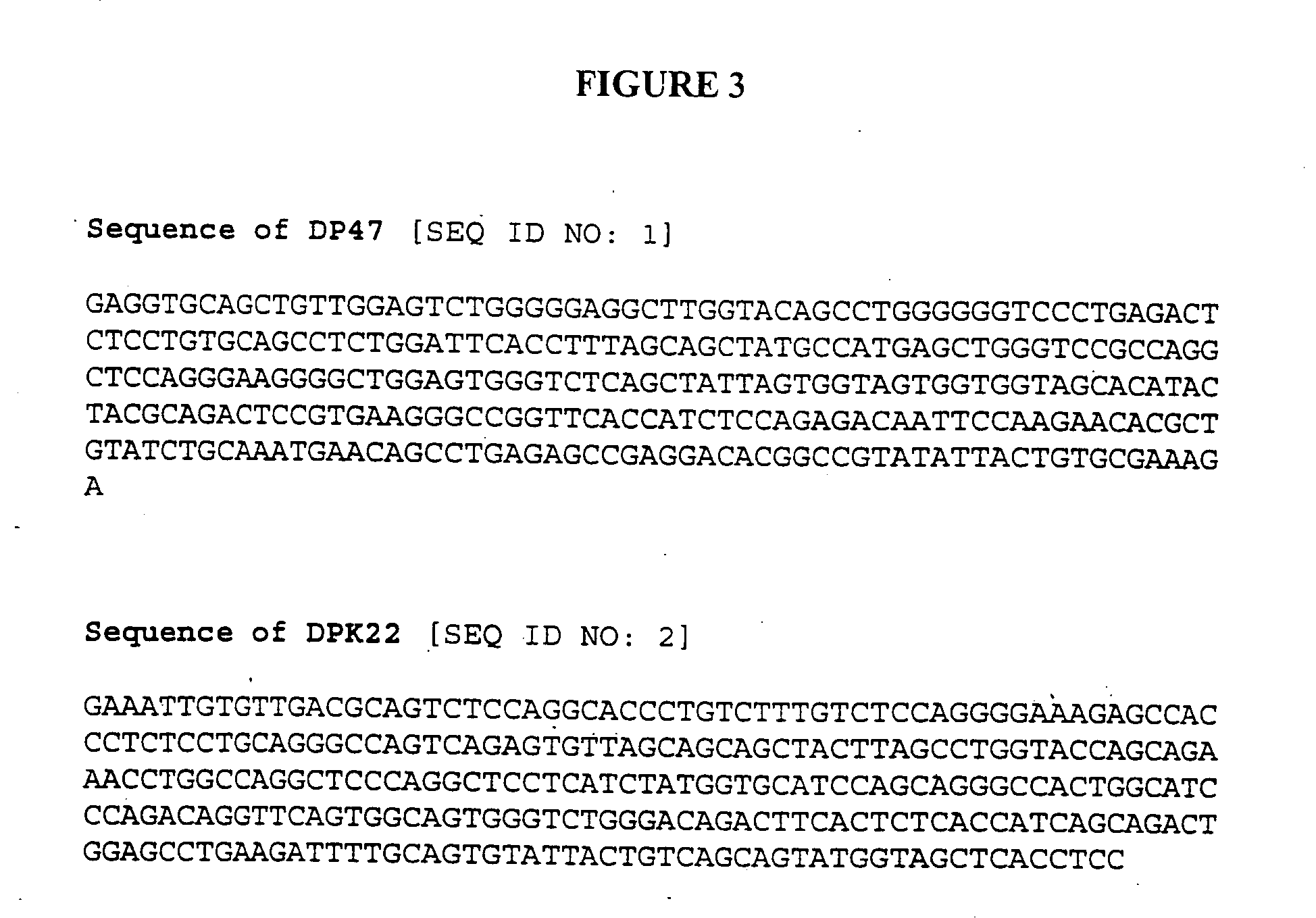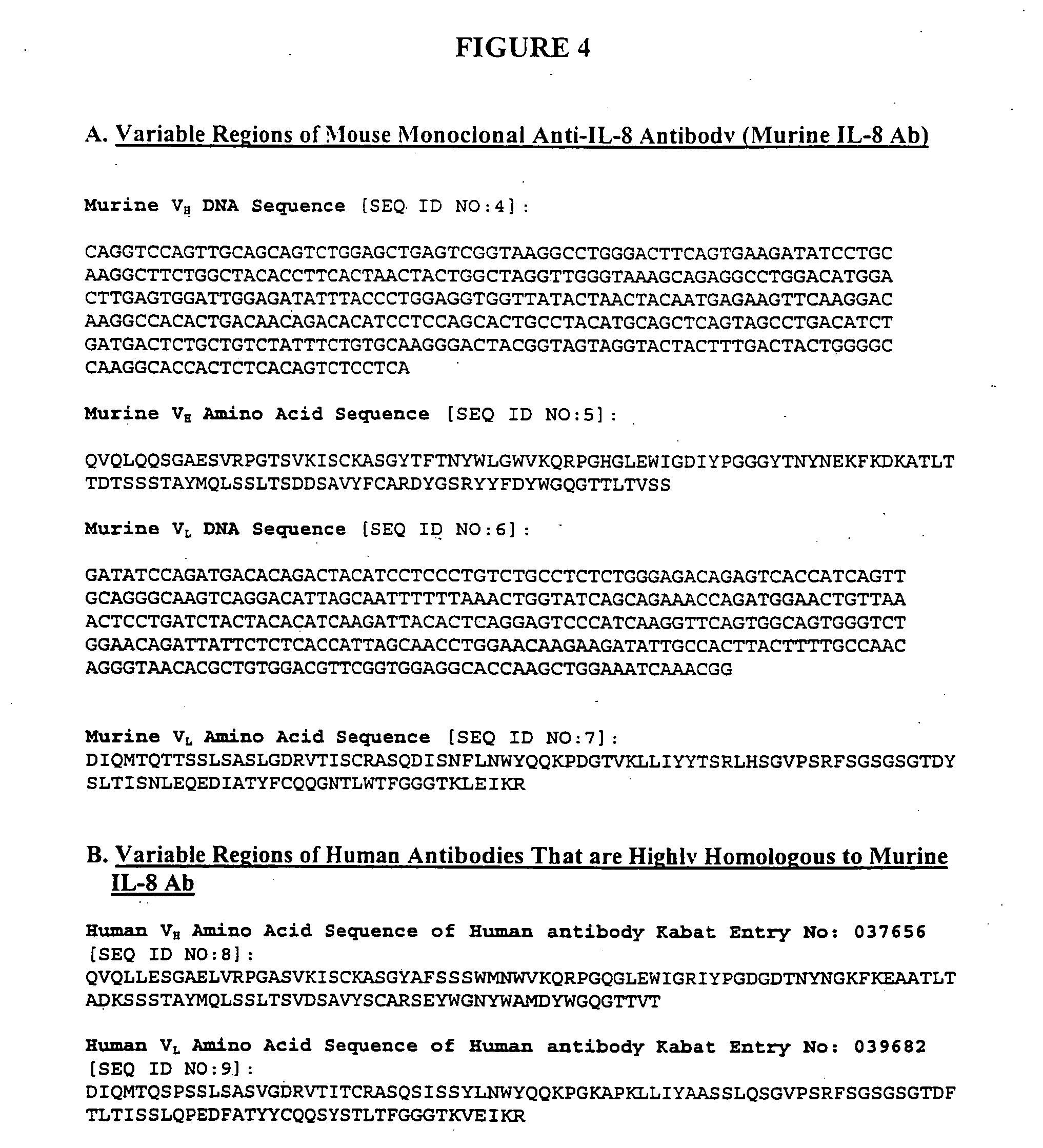High throughput generation and affinity maturation of humanized antibody
a technology of affinity maturation and high throughput, which is applied in the field of humanized antibody library generation, can solve the problems of long time-consuming and laborious selection of high affinity antibodies, inability to select mouse strains, and inability to readily process, assemble, or express/secrete functional antibodies, etc., and achieves low immunogenecity, high throughput, and high affinity in antigen binding.
- Summary
- Abstract
- Description
- Claims
- Application Information
AI Technical Summary
Benefits of technology
Problems solved by technology
Method used
Image
Examples
Embodiment Construction
[0042] The present invention provides novel methods for efficiently generating and screening humanized antibody with high affinity against a specific antigen. Compared to approaches that use stepwise tailoring and designing of individual humanized antibody in silicon (i.e. computer modeling), the humanization process according to the present invention is performed in vitro or in vivo and screened directly against the target antigen. Therefore, the present approach is more robust and more directly mimics the natural process of antibody affinity maturation in vertebrates. By using the methods of the present invention, non-human antibody can be humanized not only without loss in antigen-binding affinity but also with improved affinity and other biological functions. The whole process of antibody humanization and affinity maturation can be performed in a high throughput manner.
[0043] In one aspect of the present invention, a method is provided for humanizing a non-human antibody by mut...
PUM
| Property | Measurement | Unit |
|---|---|---|
| molecular weight | aaaaa | aaaaa |
| dissociation constant | aaaaa | aaaaa |
| fluorescence | aaaaa | aaaaa |
Abstract
Description
Claims
Application Information
 Login to View More
Login to View More - R&D
- Intellectual Property
- Life Sciences
- Materials
- Tech Scout
- Unparalleled Data Quality
- Higher Quality Content
- 60% Fewer Hallucinations
Browse by: Latest US Patents, China's latest patents, Technical Efficacy Thesaurus, Application Domain, Technology Topic, Popular Technical Reports.
© 2025 PatSnap. All rights reserved.Legal|Privacy policy|Modern Slavery Act Transparency Statement|Sitemap|About US| Contact US: help@patsnap.com



